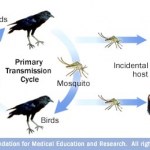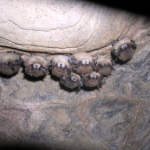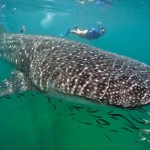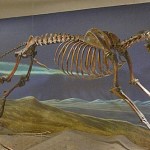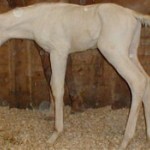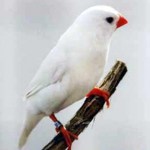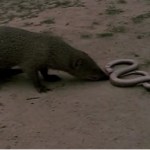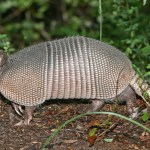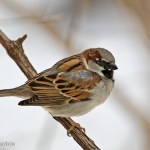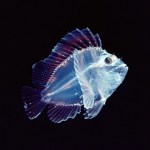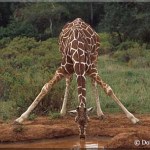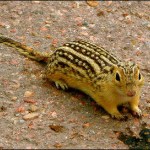
I just found this website called Africam where they have live video feeds of animals in, you guessed it, Africa. It is so neat!
My favorite recorded video they have shows an African fish eagle calling. It is such an impressive sight to see how far back this bird stretches its neck during the call. The African Fish Eagle is actually a relative of the North American bald eagle. For more information, visit the Los Angeles County Zoo's webpage dedicated to this bird.
Another fun recorded video shows a lioness interacting with her cub (photo above).
Is there a better way to spend your time…
I hate this time of year when mosquitoes come out in droves to feast on unsuspecting victims. If only garlic and silver crosses worked...
The problem with mosquitoes is that they are known to transmit numerous diseases such as malaria, west nile virus, yellow fever, rift valley fever, dengue fever, LaCrosse virus, heartworm, and various forms of encephalitis.
Humans are certainly not the only victim of the wrath of mosquitoes. These mosquito born diseases also infect numerous animals.
We can thank the mosquito digestive tract for limiting the types of diseases the insect may transmit. This…
Image: US Geological Survey
You may recall a recent post on white nose syndrome in bats. Check out this YouTube video for an overview of this devastating syndrome.
Here is an update on the progress of researchers studying the fungus:
It turns out that the fungus is lethal to bats in America but harmless to those in Europe. It is suspected that clues to this difference lie within the genome of the fungus. The genome for each strain has now been sequenced by Jeffrey Foster from Northern Arizona University and colleagues. They found that the two strains are almost identical with a few…
Image: Brian Skerry, Smithsonian Magazine.
Check out the world's largest fish, the whale shark, which can reach lengths of more than 45 feet! These fish were featured in a recent article from Smithsonian Magazine. You would think the diver would be afraid of being eaten by the "shark", but it turns out these filter-feeders prefer zooplankton, which is how they got their name. Look, no teeth:
How is it the largest animals seem to thrive off the smallest creatures? By eating all day. In fact, a recent study of these animals shows that they spend 7.5 hours per day feeding on the tiny creatures…
Image: La Brea Tar Pits
Image: ©2010 Betsy Malloy Photography
All that is left of this prehistoric species are bones like those shown above found at the Los Angeles La Brea tar pits. Many of these wolves ended up there as they presumably hunted "easy" prey stuck in the pits and in the process became trapped themselves. In fact, this is the most common species found in the pits suggesting that this was a social species.
I LOVE the National Geographic channel!
According to this special, this is the largest family of dogs that ever lived. In this MUST see episode, the anatomy and physiology…
Image source: www.etsy.com
It may be hot outside now, but soon enough black bears will be entering their annual hibernating ritual. This brief BBC clip is worth watching (and learning from) over a tall glass of iced tea or lemonade. In the meantime, if you see bears and their offspring while you are out and about during summer vacation, send along any photos you take. The Doctor will post the best ones and the winner of the photo contest will get the latest, "Want to Know What's New in Comparative Physiology?" t-shirt.
To get things started:
Here is a photo showing how one bear is spending…
Veterinarians can learn a lot about an animal just by looking at their coat and eye color. That is because certain inherited disorders are associated with these traits, which have been described in a recent review article published in the Canadian Veterinary Journal.
Take coat color-related sensorineural deafness for example. This inherited disorder has been commonly diagnosed in dogs, cats, horses, llamas and alpacas. Typically these animals have white, merle or dapple-patterning in their fur although that alone is not indicative of whether the animal will develop deafness. Animals that…
Young male finches are able to copy their father's songs and will adopt the songs of foster parents from other species. However, they resist learning tape-recorded songs. Researcher Patrice Adret at the University of Chicago wanted to know if they would be able to learn recorded bird songs if they were allowed to control the tape player. Birds that were in control of the "music" were found to learn the songs better than birds kept in adjacent cages that just listened to the songs being played. She also found that zebra finches sang well when viewing images of other birds, especially when…
It should not be surprising that the decline of most bird species may be attributed to changes in their habitat. These changes may include human-related causes such as increased farming, urban sprawl, industrial development, logging, drilling and mining. Global warming is to blame for earlier springtimes that can impact the mating habits of birds. Fires are additionally potential causes for the decreased populations of some bird species. Whatever the reason, many populations are on a downward slope.
Here is a list from the National Audubon Society of the top 20 common birds in decline:
1.…
PHOTO CREDIT: M. Walters, University of Canterbury
Like bees, birds are important plant pollinators. Scientists have provided evidence that declining bird populations have negatively impacted plant reproduction. They found that on islands where bird populations have dwindled, the density of Rhabdothamnus solandri shrubs (shown above from figure 1 of the article) have also declined. This was attributed to reduced pollination and seed production. The full article appears in Science Magazine.
This decline in both the birds and the bees could be devastating for plants around the world.…
In this amazing video from National Geographic, a mongoose is shown winning a battle with an Asian cobra. How can these cute animals compete against such a deadly snake?
It turns out that the mongoose is resistant to snake venom, specifically, alpha-bungarotoxin. This toxin is lethal to many creatures because of its ability to block nicotinic acetylcholine receptors (nAChR). These receptors were aptly named after their affinity for the drug nicotine and are found on the surface of muscle cells where nerves containing acetylcholine are also located. Here, they are able to respond to…
Image Source: tsuru-bird.net
The low body temperature of armadillos is thought to contribute to their susceptibility to infection with the bacteria responsible for causing leprosy, Mycobacterium leprae. In fact, armadillos were intentionally inoculated with the bacteria in the 1960's to allow researchers to learn more about this disease and to develop treatments. In 1975, researchers discovered wild armadillos with leprosy but transmission of the disease to humans was considered unlikely. That may be changing...
Thanks to gene typing technology, researchers have found that the genotype of…
Photo by Bryan Roeder of a hibernating ground squirrel courtesy of Dr. Sandra Martin.
I sent these great comments and questions about a recent blog on Dr. Sandra Martin's work with hibernating ground squirrels to the expert for her response:
Halie J: I really found this article interesting. Knowing that animals gain muscle mass while they hibernate is fascinating and I'd like to know more about how that happens. I'm not sure it's a good thing they are losing body mass though because isn't it healthier to have more body mass then muscle mass? If fasting increases the antioxidant levels in the…
Image Source: http://www.ontfin.com/Word/marwick-head/
Migratory birds utilize significant amounts of protein during their long distance flights. Researchers Schwilch et al., have studied this process in migratory passerines, or perching songbirds. What they found was that most of the protein is derived from breast muscles with some proteins from coming from organs. Until now, researchers had assumed the birds were using proteins as a preferred source of energy after their fat stores had been depleted. However, muscles are comprised of 70-75% water making this tissue a potential source of…
Photo Credit: Photograph by Ingo Arndt, Minden Pictures
Looking rather like an alien from a Star Trek episode, this sea butterfly snail is just one of many marine animals found in a photo gallery of translucent marine life on the National Geographic website. However the strangest cartoon-like fish has to be the Pacific barreleye shown below in an image from the National Geographic website (from the Monterey Bay Aquarium Research Institute).
In an effort to study the internal organs of live fish, researchers in Japan actually developed a translucent goldfish last year. I bet these will be…
Image of gypsy moth larvae from: USDA Forest Service Archive, Bugwood.org
According to the Smithsonian Encyclopedia, the gypsy moth (Lymantria dispar) was brought to the United States in the mid-19th century in an attempt to find a silk-producing moth that would not be susceptible to diseases that afflicted Silkworm Moths. Deserving of their name, these moths could not be contained and in 1868 or 1869 some escaped from the breeder's house. In only 10 years time, the neighborhood trees were badly damaged by this foliage-eating moth. Since then these larvae are infamous for their destruction…
Cats are no doubt one of the most graceful and athletic animals. Researchers from Drexel University, Georgia Institute of Technology, and the University of Manitoba, Winnipeg, Canada have developed a computational model of hindlimb locomotion for a cat. Locomotion is controlled by central pattern generators, which are groups of motor neurons within the spinal cord that control coordinated movements like walking. A website showing this model in action can be viewed here.
Studying how cats walk may provide tools to improve the understanding of locomotion in other species. It may also help in…
Being the tallest animal, coming in at around 18 feet, can have its advantages. However, the heart of such a tall animal must be extraordinarily equipped to handle the daunting challenge of pumping blood not only to the legs, but also against gravity all the way up their long necks to the brain. They achieve this by maintaining blood pressures that are twice that of other mammals.
For a review on how the heart works, click here.
Researchers in Denmark and South Africa have been studying the hearts of these amazing animals to find out how they work. Their findings were presented at the…
A healthy uterus is required for proper implantation of an embryo and development of a fetus. Disorders of the uterus including polyps, fibroids, scarring, etc can lead to infertility requiring would-be parents to either adopt a child or consider hiring a surrogate mother.
Researchers have now been able to show, for the first time, the feasibility of transplanting a uterus capable of sustaining a normal pregnancy in Sudanese and Ethiopian ewes.
You can actually watch a video describing this amazing research!
Source:
V. Ramirez, ER Ramirez, DK Nessetti, M Messetti, M Khatamee, R Navarro, TH…
Here are highlights of my favorite abstracts covering the topics of hibernation and fasting that were presented at the Experimental Biology meeting last week:
-Drs. Allyson Hindle and Sandra Martin from the University of Colorado Denver in Aurora, CO presented "Muscle regeneration occurs in late hibernation despite continued loss of body mass." They showed evidence that the muscle volume of hibernating 13-lined ground squirrels (Ictidomys tridecemlineatus) declined from the onset of hibernation (October) through early February. This was expected since the animals were fasting and not active…

